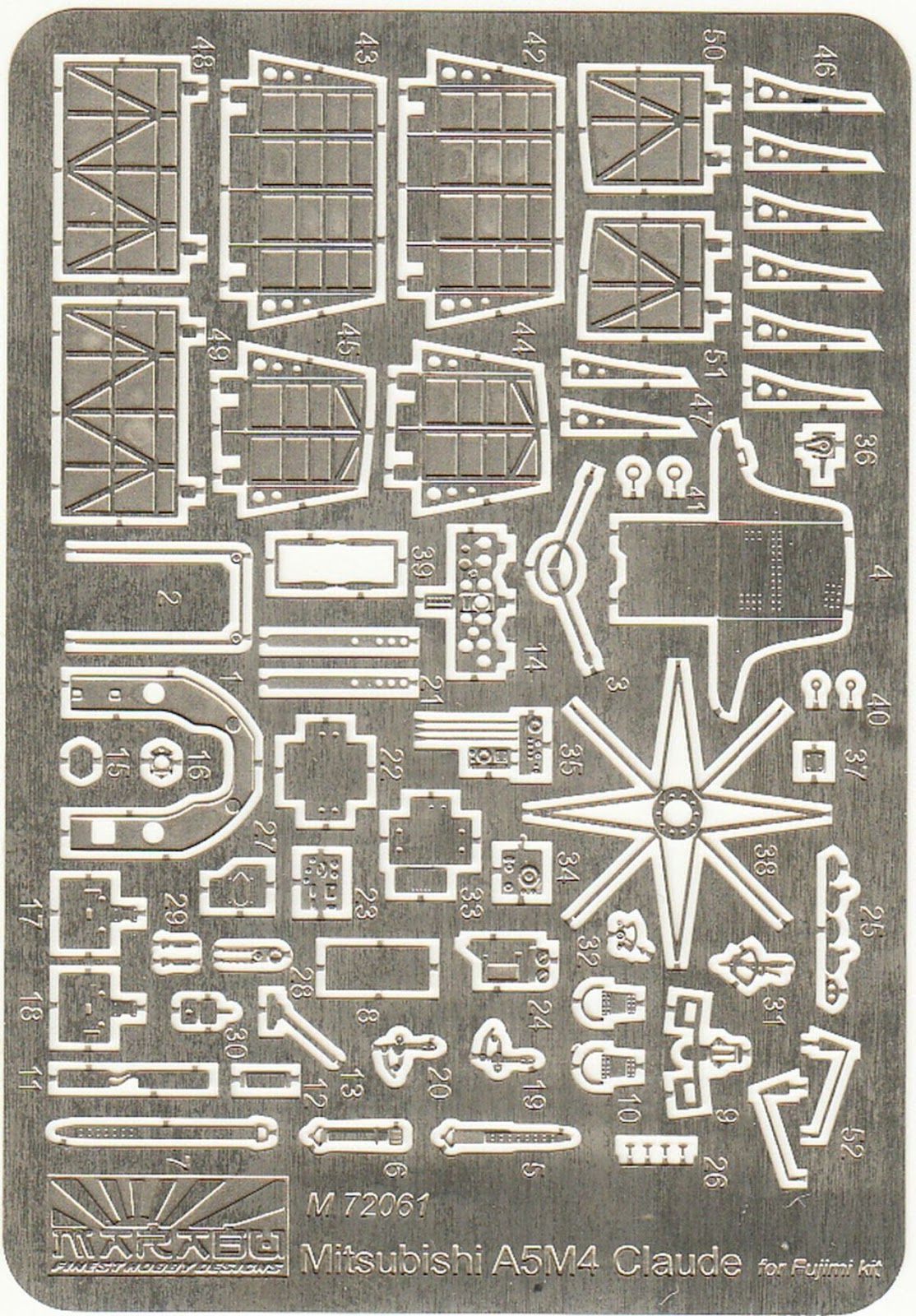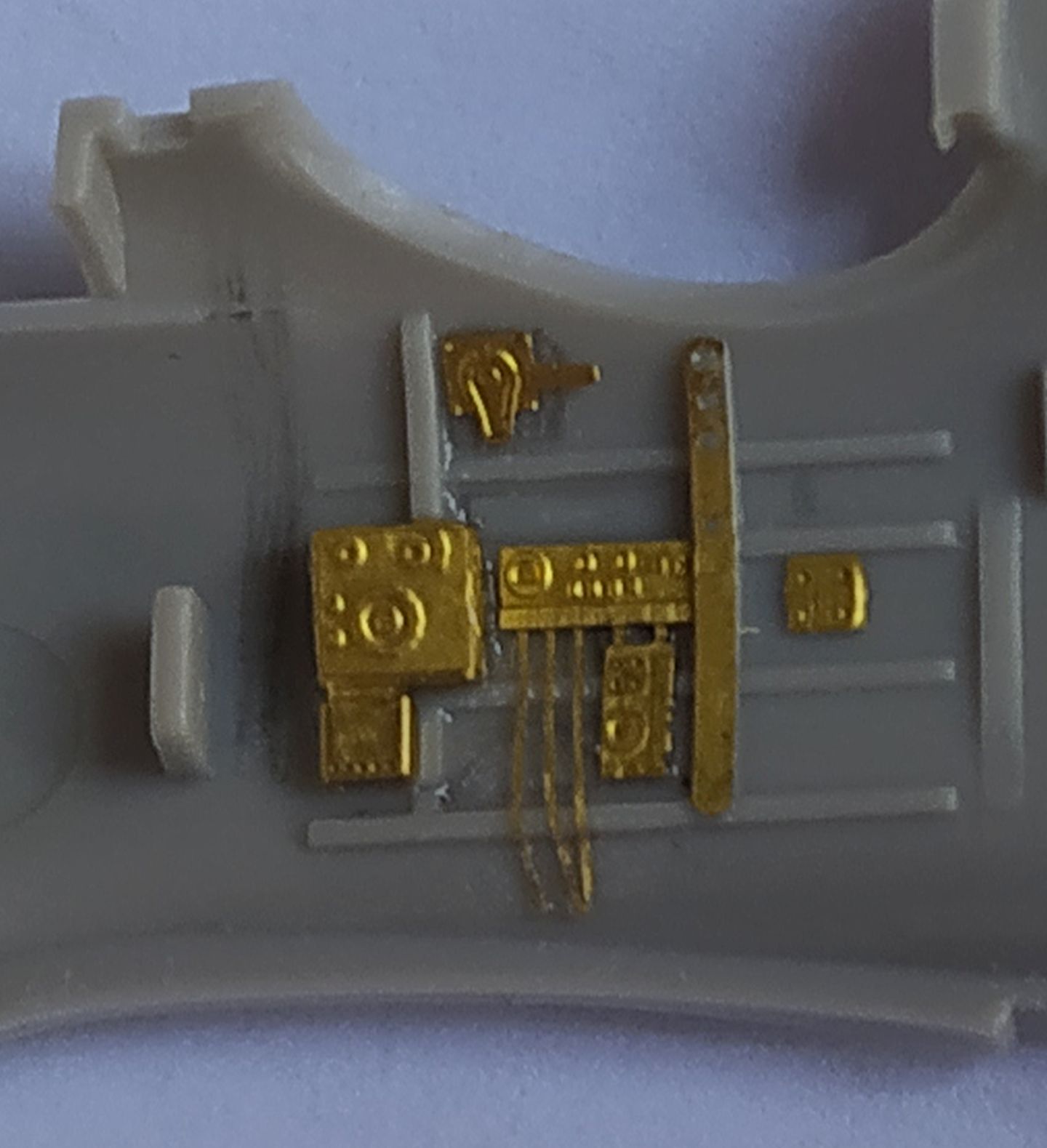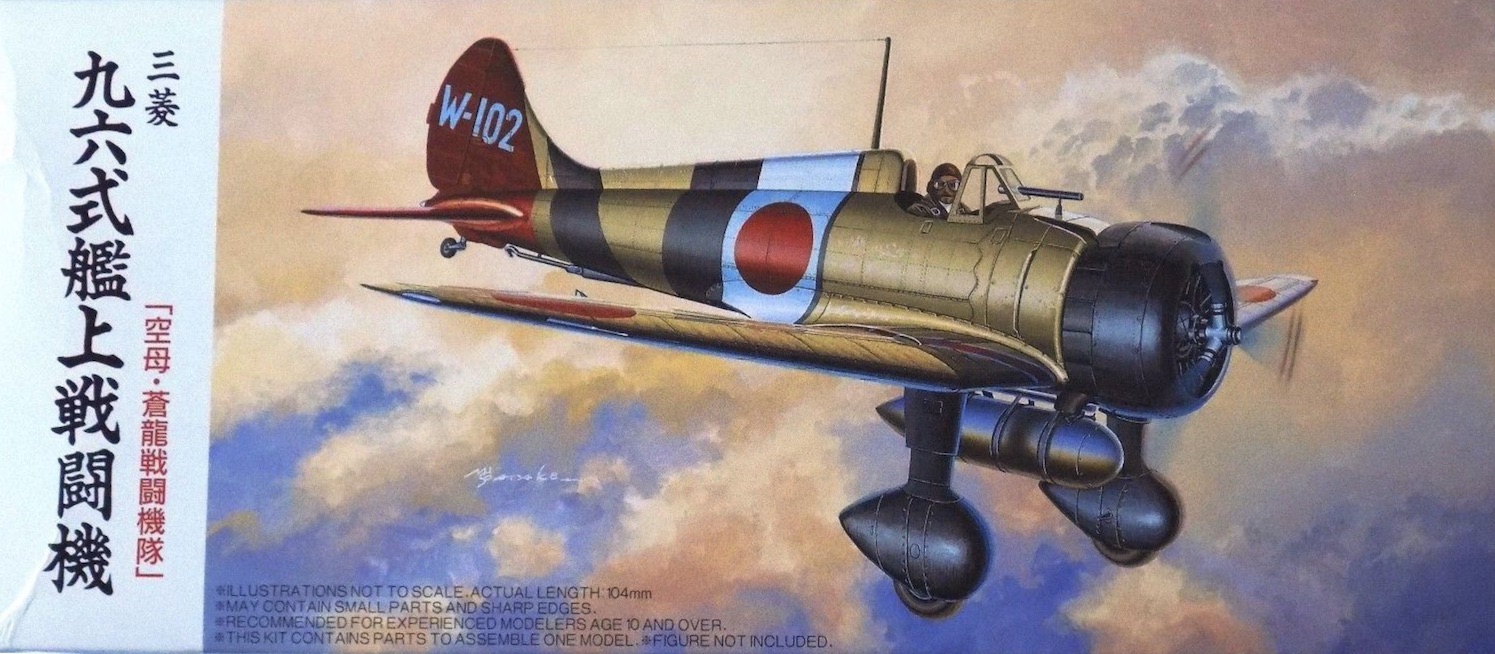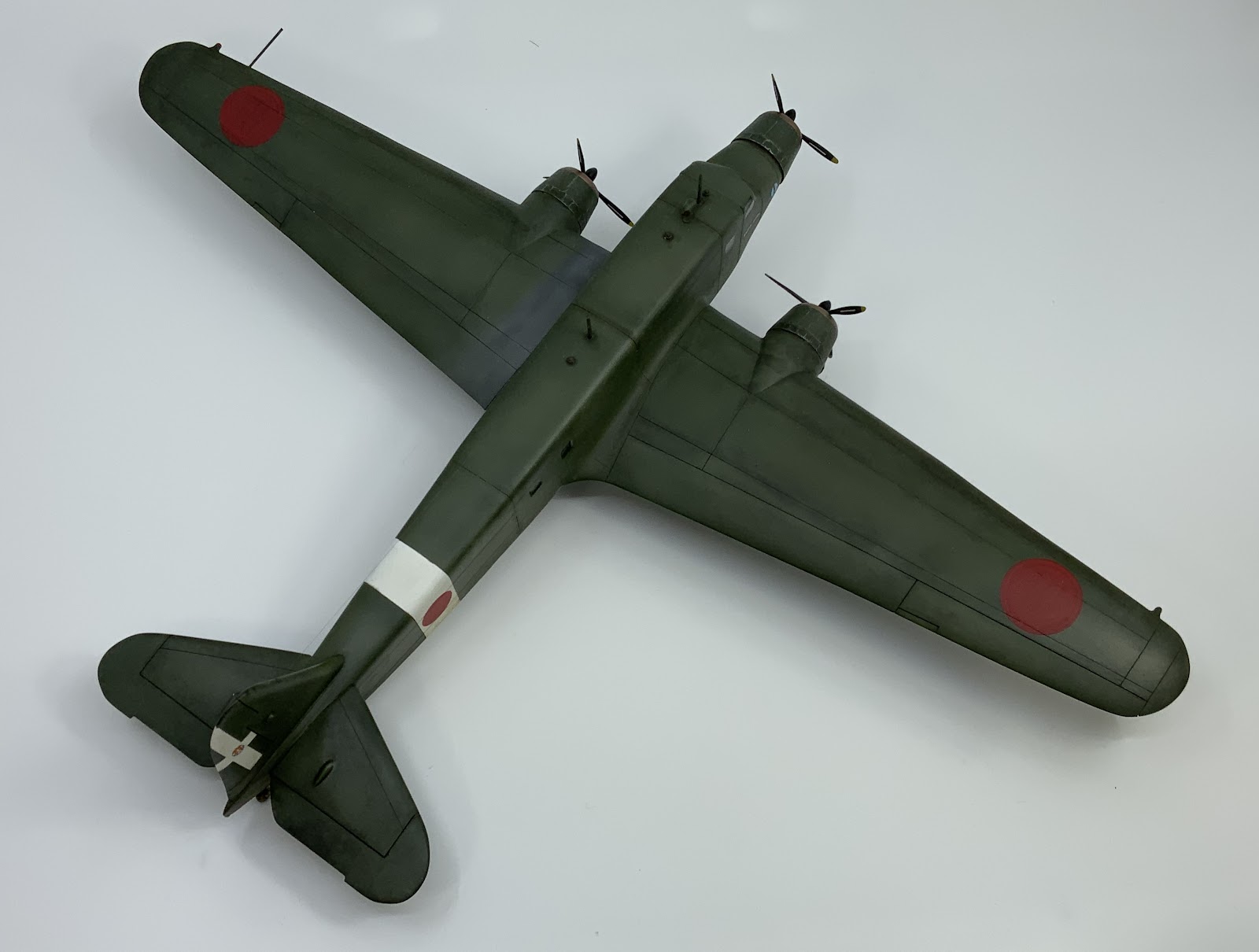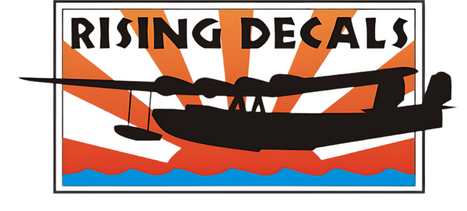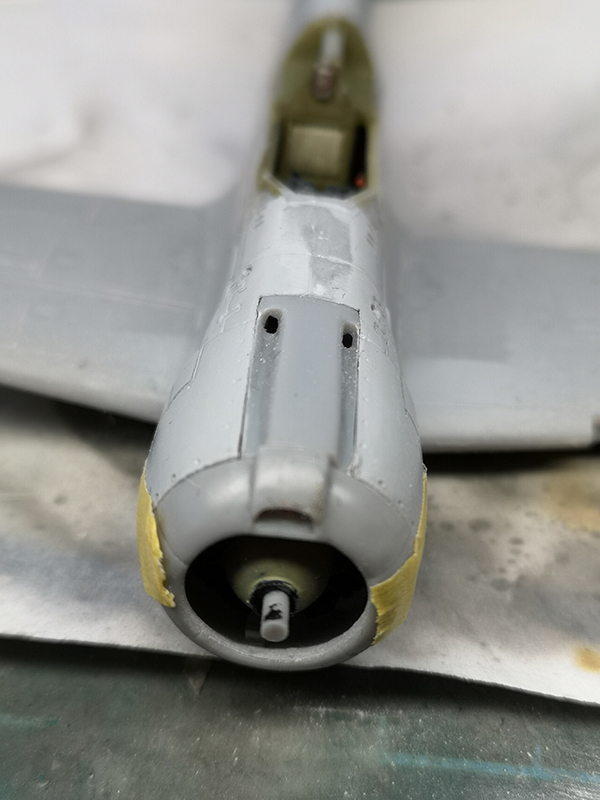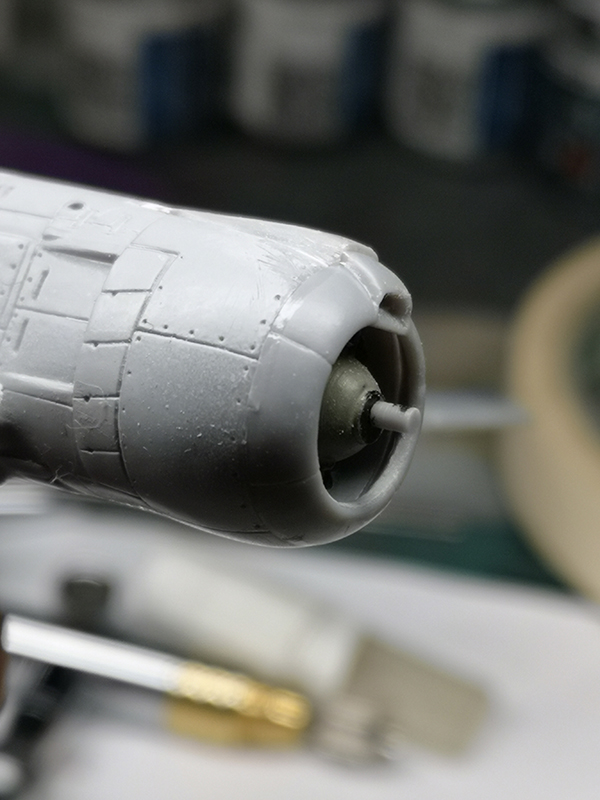A fitting follow on to Rising Decals 59th Regimental set are these images of a gorgeous Goshikisen in 59 Sentai markings crafted from the 1/72 scale Fine Molds kit by Francesco Borraccino. And crafted the operative word given the fit challenges that Francesco encountered.
Francesco noted that the kit is 'not exactly a shake and bake' but in his opinion captures the shape of the aircraft well. He chose to represent '078', a 59th Sentai fighter as shown in a well known photo taken at the end of the war by the allies together with other aircraft in a row. This choice was motivated by a desire to represent an aircraft in a decidedly weathered condition, but supported by documentary evidence and with something for everyone: faded paint, extensive chipping, replaced parts from other aircraft and then some repainting.
Francesco had to make the yellow/red bands of the Sentai insignia by hand because the kit decals were too narrow and the printed yellow too orange. Furthermore, in analysing the original photo he could see how the insignia was roughly painted, so he painted the red edges freehand using gouache.
Francesco noted several other airframe features and peculiarities from the photograph which he endeavoured to incorporate on the model, including a possible replacement rudder from a Ki-61, the apparent lack of yellow tips to the rear of the prop blades and evidence of fuel staining. Although the antenna mast seemed to be a different colour to the airframe, possibly painted red, Francesco decided against representing that.


Regarding the fit of parts Francesco found a lot of remedial work was required. The instrument panel needed additional support to be positioned centrally, the tailplanes had tabs which prevented correct alignment and positioning. The upper cowling part was misaligned and had to be supported on one side to prevent sinking. The cowling front did not align so had to be trimmed on one side and filled on the other. He wasn't sure whether the problems were due to the moulds being worn or the kit engineering but the fit problems have been noted in other builds of this kit.
Painting was intended to represent the # 7 colour but Francesco's mix resulted in a convincing representation of the darker # 43 Earth colour, the so-called 'charcoal' or blackish-brown colour (kuro kasshoku).
The finished model gives no indication of the battle with the fit as shown above and is an excellent representation of the 'fastback' Goshikisen. With special thanks to Francesco for sharing another fine model with Aviation of Japan.
Image credit: All model photos © 2025 Francesco Borraccino.
Fine Molds Ki-100

The first release of this kit in 1990, under the Fine Molds label as FP3 'Tony Type 5 (Early Version)' but marketed by Hasegawa with monochrome box art by Masao Satake, who also illustrates the monochrome FAOW covers, was a hybrid, consisting of the complete Hasegawa Ki-61-I Tei kit with a new injection moulded sprue frame to convert it to a 'razorback' Ki-100. The additional sprue frame consisted of two new fuselage halves, a new cockpit floor, two part instrument panel, upper cowling, cowling front, relief moulded radial engine, prop, spinner, ventral fairing and oil cooler. Also included were white metal parts for the pilot seat, control column, undercarriage legs and tail wheel plus a new one piece transparency for the canopy. The antenna mast was moulded integrally with the starboard fuselage half and the separate mast on the sprue frame marked as 'not for use'. Three subjects were offered on the decal sheet, '43' of 111 Sentai Akeno as depicted on the box art, '177' of 59 Sentai and '32' of 244 Sentai.

The 'bubbletop' Ki-100 kit, FP2 marketed as Ki-100-I the same year was another hybrid but always seemed harder to find. Fine Molds Kit FP1 'Kawasaki Ki-61-II Kai Hien (Tony) shown above, was the first Hasegawa-Fine Molds hybrid, released in 1989 and also combining the complete Hasegawa Ki-61-I Tei kit with new Fine Molds parts to convert it to the bubble canopied version. This kit included white metal parts for undercarriage legs, oil filter scoop, spinner, pilot seat, control column and tail wheel. The decal sheet offered two 56 Sentai aircraft, one camouflaged per the box art and an overall natural metal aircraft.
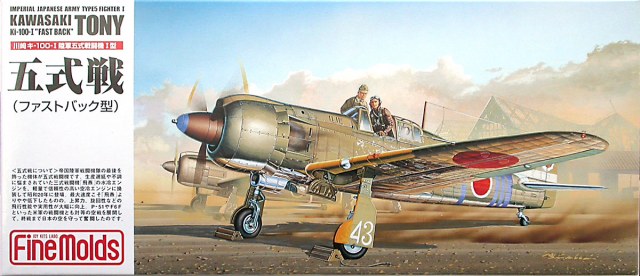
When the Ki-100 kit was re-released in 1999 by Fine Molds as FP17 'Imperial Japanese Army Type 5 Fighter 1 Kawasaki Ki-100-I 'Fast Back' Tony' with new colour box art by Masao Satake, shown above, the Hasegawa Ki-61 parts had been replaced with a new dedicated Ki-100 sprue frame and the metal parts had been replaced with plastic items. The kit offered five subjects, '43' of 111 Sentai Akeno, '88' of 5 Sentai, '078' and '153' of 59 Sentai and '22' of 244 Sentai. One of the omissions of the Hasegawa Ki-61 kit was also rectified with the inclusion of a landing light recess and transparency for the port wing. A second re-release FP22 'Imperial JapaneseArmy Type 5 Fighter 1 Kawasaki Ki-100-I 'Bubble Canopy' Tony', also shown above, followed in 2001 with the same all-Fine Molds, all-plastic presentation. The three kit decal sheet options were '39' of 5 Sentai, '022' of 59 Sentai and '80' of 111 Sentai Akeno.



















